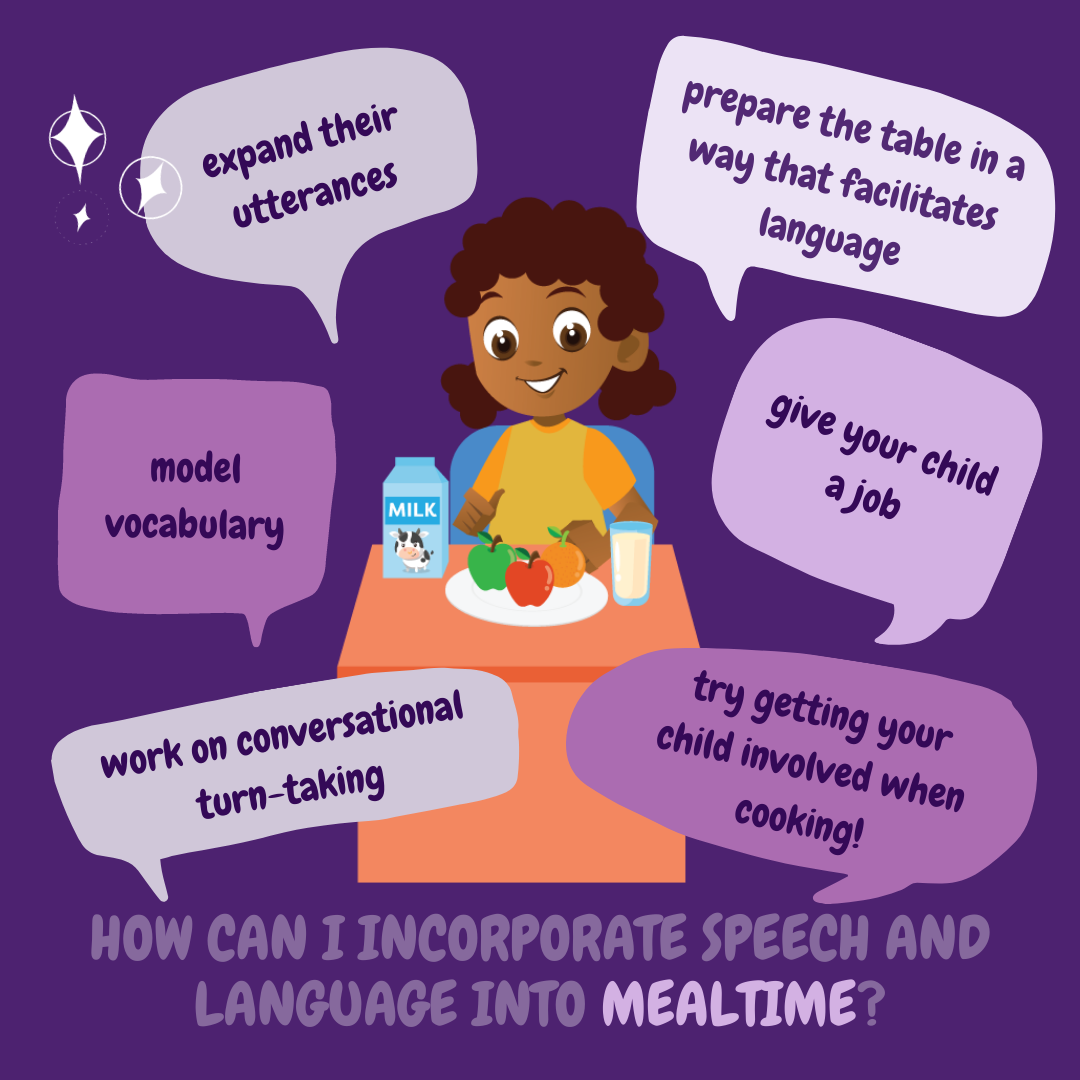Incorporating Speech and Language in Routines: Meal Time
Routines are the perfect opportunity to work on your child’s speech and language. First of all, routines are something you’re going to be doing everyday, which means that you don’t need to add one more thing into your day (honestly, who has time for that?).
Meal time is a routine that we participate in multiple times per day, every day. It’s the perfect opportunity to work on your child’s speech and language skills while still enjoying quality family time.
Meal time is one routine that we engage in several times throughout the day! It opens up so many opportunities to model and improve your child’s language skills. Here are a few you can try:
Increasing their vocabulary repertoire:
Name foods or tools in the kitchen
Describe your food (“these carrots are crunchy!”, “this sauce is creamy”)
Name categories (fruits, vegetables, desserts)
Expanding utterances through requesting
Children can work on requesting when given a choice between two food items, utensils, plate/cup colors, etc. (“I want…”, “can I please have…?”, “more… please”)
Give your child a job to help with!
Giving your child a job at meal time allows them the opportunity to practice following directions, increase vocabulary, and practice using their language in a functional way
A couple of examples include having them set the table or set out ingredients for a recipe
Prepare the table in a way that facilitates language
When setting up the meal area, making “mistakes” is a great opportunity for speech and language practice! Soup for dinner? Maybe forget to put out a spoon. Giving them the wrong utensil (or no utensil!) creates the opportunity to state the problem and develop a solution. This type of scenario offers the opportunity to work on requesting and using language.
Model and practice your child’s speech sounds while you’re preparing dinner together. Try playing a game like, “I Spy”, to practice naming, identifying objects by different descriptors, and describing.
Practice speech sounds and language skills before dinner
When getting ready for dinner, you can work on your child’s speech sounds while naming different tools or ingredients, or playing a game. Games in the kitchen like, “I Spy”, allow the child to practice naming, identifying objects by function, feature, and class, and describing.
Conversational turn-taking
You can work on staying on topic, taking turns, responding to or asking questions, or even discussing similarities and differences between food or other items at the table.
Sitting and attending
Family meal times give the opportunity for quality family time at the end of a busy day. Sometimes sitting at the table for a meal can be challenging for children. Learning to sit and listen are important readiness skills for communication development and academic success. Meal time is a great time to practice these skills! If your child can sit for 4-5 minutes, try extending it to 6 minutes, then 7!
Try getting your child involved when cooking too!
Cooking with your child not only opens more opportunities to work on language, but it may also help lead your child to eat a greater variety of foods!
When cooking, introduce new vocabulary including actions and describing words. Using a simple language when narrating also offers the opportunity for the child to expand on the narrative
Meal time is a time for family, a time for fun, and a great time to work on speech and language embedded within a routine that you’re already doing every day.
Do you have concerns about your child’s speech and language development? A comprehensive evaluation with a speech language pathologist can help identify any specific areas of needs and develop a treatment plan to support your child’s speech and language needs. Contact us for more information.



